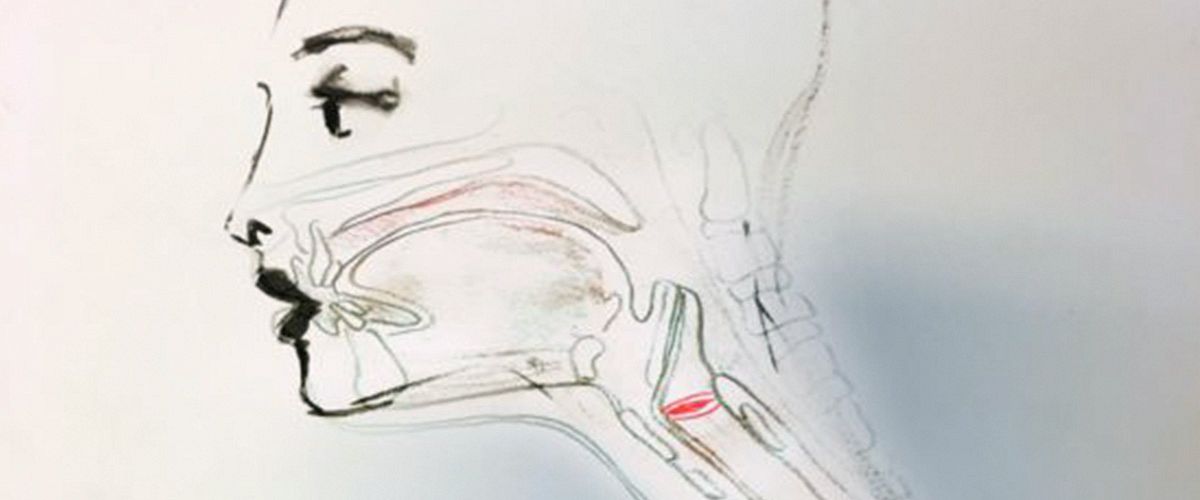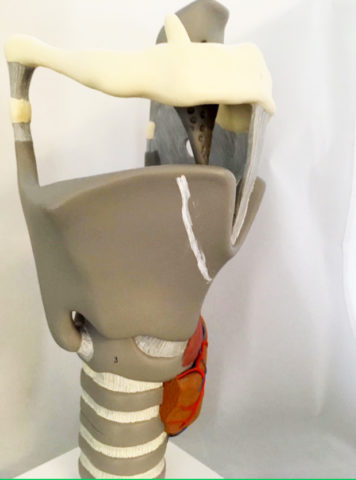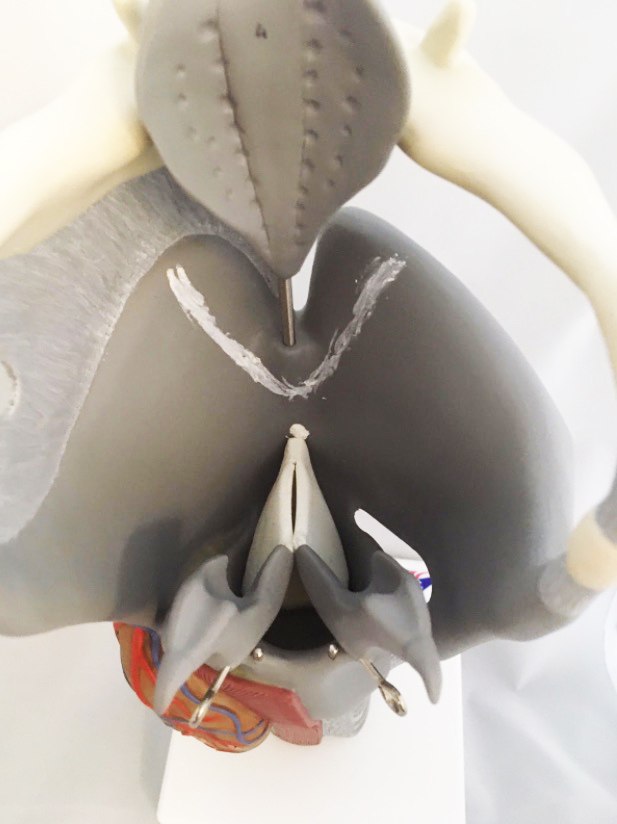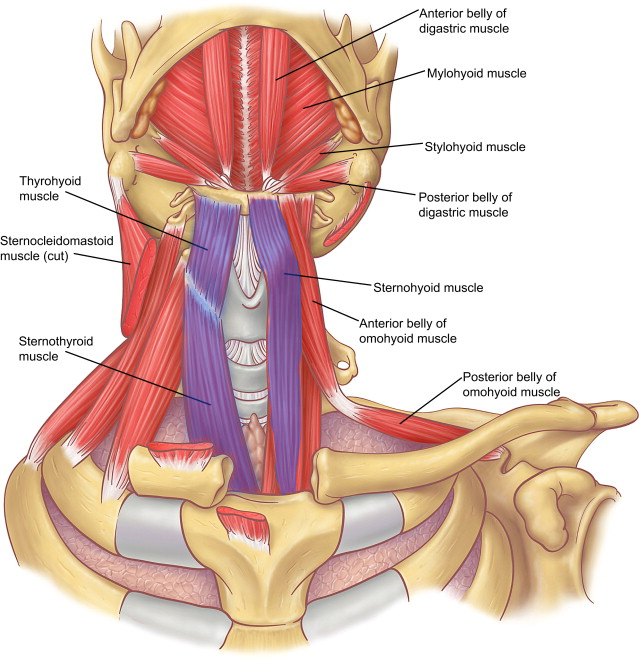Dit artikel is niet beschikbaar in het Nederlands.
Will a tracheal shave compromise my voice feminization surgery?

A Tracheal Shave is a procedure often performed during facial feminization surgery. The following question is frequently asked in respect to a tracheal shave and the voice: Will a tracheal shave compromise my voice feminization surgery outcome?
A tracheal shave will not compromise the outcome of your voice feminization surgery if:
- The vocal cords themselves aren’t damaged
- The muscles around the voice box (extralaryngeal muscles) aren’t damaged
- There’s enough remaining strength of the voice box cartilage
Vocal cords
Obviously damaging the vocal cords during a tracheal shave doesn’t help in getting a feminine voice. The cords would lose tension, the pitch would fall and the voice would become raspy.
Below you can see a plastic model showing the part of the thyroid cartilage that forms the Adam’s apple. The white lines show where the cartilage needs to be cut to be removed by a tracheal shave.
 Plastic model showing the part of the thyroid cartilage that forms the Adam’s apple. The white lines show where the cartilage needs to be cut to remove the Adam’s apple during a tracheal shave.
Plastic model showing the part of the thyroid cartilage that forms the Adam’s apple. The white lines show where the cartilage needs to be cut to remove the Adam’s apple during a tracheal shave.
The next picture shows the same white lines on the inside of the cartilage model and the relation to the vocal cords (white folds) that are located just below.
 This picture shows the same white lines on the inside of the cartilage and the relation to the vocal cords (white folds) that are located just below.
This picture shows the same white lines on the inside of the cartilage and the relation to the vocal cords (white folds) that are located just below.
To be sure that the vocal cords will not be damaged during a tracheal shave it is essential to know how much of the cartilage can safely be removed. You can read more about the specific method we use to ensure this right here. In about 90% of cases the Adam’s apple can be made invisible by means of a tracheal shave, in 10% of the cases a small Adam’s apple remains visible.
The muscles around the voice box
Muscles on the outside of the voice box cartilage, such as thyrohyoid muscle and sternothyroid muscle, must not be damaged during surgery. The voice box cartilage is not stiff bone but flexible cartilage (like the one that gives your ears shape). By altering the form and position of the voice box these muscles help to increase your pitch and they also give you an important resonance control.
Dr Yeson did an investigation and patients with damaged muscles had 20Hz less pitch if these muscles are damaged. During a tracheal shave, Dr Bart van de Ven gently pushes the muscles aside without damaging them, so you can have your voice feminization surgery afterward without compromise.
Below these muscles are indicated with blue shading. During a tracheal shave, Dr van de Ven will search for the thyroid cartilage in the midline first and then carefully push these muscles aside to make sure they will not be damaged.
Enough remaining strength of the voice box cartilage
Some (mostly younger) patients have very soft cartilage. The surgeon has to make sure that the cartilage of the voice box keeps enough strength to withstand the forces of the vocal cords so the cartilage doesn’t bend. Bending of the cartilage on contraction of the vocal cords would lower the voice. In those patients, Dr Bart re-fixates the removed pieces of cartilage a bit lower against the remaining cartilage using sutures.
 The muscles important for moving the voice box are indicated with the bleu sh
The muscles important for moving the voice box are indicated with the bleu sh
The technique used by 2pass Clinic is perfectly compatible with your voice feminization surgery at the Yeson voice center. Dr Bart van de Ven and Dr Kim from Yeson Voice Center had contact to make sure their techniques are compatible.
Operations after your voice feminization surgery
After a voice feminization surgery, it is important the shortened voice cords are not damaged during intubation for other surgeries you might have in general anesthesia. Ideally, a 5.5 diameter air tube should be used by the anesthesiologist. For longer operations, this can be problematic because air has to come in with more force because the tube is smaller. It depends on the anaesthesiologist's insights on whether he thinks your lungs and body are healthy and can have it. For shorter operations, this is not so much of an issue, and the small 5.5 air tube can be used. Discuss this with your anesthesiologist before every operation you may have.
When should I plan to have my voice feminization surgery?
For the above-mentioned reasons, ideally, your voice cord surgery is the last surgery of your transition. At least big surgeries like SRS and FFS should have been performed prior to your voice cord surgery.
Gerelateerde artikels:
- Geen artikels gevonden
We doen ons uiterste best om deze informatie up-to-date te houden. Mocht u iets zien wat niet meer klopt, of heeft u een vraag, vul dan het onderstaande formulier in!
